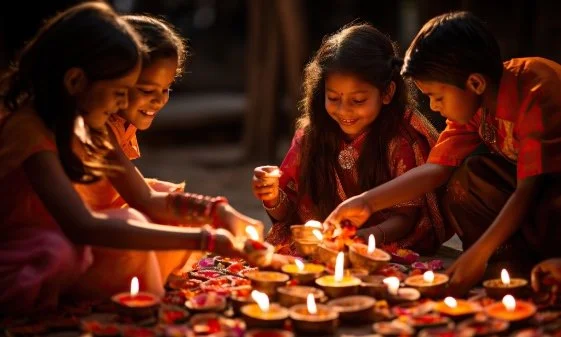Delhi Needs No Balance Between Diwali and the Air It Breathes
Air Quality in Delhi/NCR Turns ‘Very Poor’ on Diwali Eve
October 20, 2025
Calling it a “balanced” decision between tradition and the environment, Delhi’s Chief Minister welcomed the Supreme Court’s move to allow firecrackers this Diwali, even as the city’s air turned visibly toxic. There is no balance in that. There is evasion, political softness and a confusion between ritual and substance.
The court’s decision came on Oct. 15, just as the city’s Air Quality Index (AQI) crossed 300 and the haze thickened. For the first time since a total ban in 2020, green firecrackers, which are intended to be a “less-polluting” version of ordinary firecrackers, were cleared for sale and use, restricted to two days and fixed hours.
On Diwali eve, Oct. 19, most of Delhi breathed poison. Twenty-four of 38 monitoring stations recorded air quality in the “very poor” range, and in Anand Vihar it crossed 400. The Delhi government enforced Stage 2 of the Graded Response Action Plan after the air had already turned unfit for human lungs.
This was not a “balance.” It was a decision to allow pollution in the name of belief. The government and the court protected the right to burn chemicals but not the right to breathe. Faith was never in danger. Only a noisy custom, mistaken for devotion, was.
The idea that every symbol in a religious festival must be preserved is a modern fiction. Faith survives many things, including the banning of things that never belonged to it. Diwali is not firecrackers. Diwali is light; it’s substance is the renewal of clarity over confusion, of light over ignorance, and of good conduct over deceit. The use of explosives came later, as commerce, novelty and noise attached themselves to celebration. Crackers are not sacred. They are sold in bulk, manufactured with chemicals and leave behind soot, debris and injury. Their presence in the festival is not proof of piety.
What is sacred is the meaning of the festival, not its decorations. And meanings do not need noise. They do not require fuel-based combustion. They do not demand PM2.5 in the lungs of children. Any tradition that cannot survive without harming the air others breathe is not tradition.
The word “green” in green crackers is a distraction. These still contain pollutants. They still raise AQI levels. The only thing they do is help the state appear to be doing something while doing very little. To burn a lesser poison in already toxic air is not mitigation. It is denial, wrapped in packaging that looks official.
Responsibility now lies with those who make decisions.
The Environment Ministry must direct the Central Pollution Control Board to issue automatic cracker bans in all cities where AQI crosses 200, regardless of festival schedules. These should be pre-declared emergency zones under the Air (Prevention and Control of Pollution) Act, with local governments empowered to enforce the restriction without needing new orders.
The Delhi government, along with civic bodies and police authorities, must coordinate to ensure enforcement. But more importantly, it must stop pretending that regulation is an attack on belief. If it is serious about both air and religion, it should fund mass campaigns on celebrating Diwali without emissions.
Nothing in Diwali requires the air to turn poisonous. No deity asked for ammonium nitrate. No scripture instructs that lungs must suffer for lamps to shine. The firecrackers are not defending faith. This is not balance. This is confusion.
You have just read a News Briefing by Newsreel Asia, written to cut through the noise and present a single story for the day that matters to you. Certain briefings, based on media reports, seek to keep readers informed about events across India, others offer a perspective rooted in humanitarian concerns and some provide our own exclusive reporting. We encourage you to read the News Briefing each day. Our objective is to help you become not just an informed citizen, but an engaged and responsible one.

